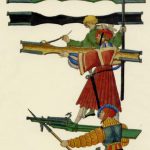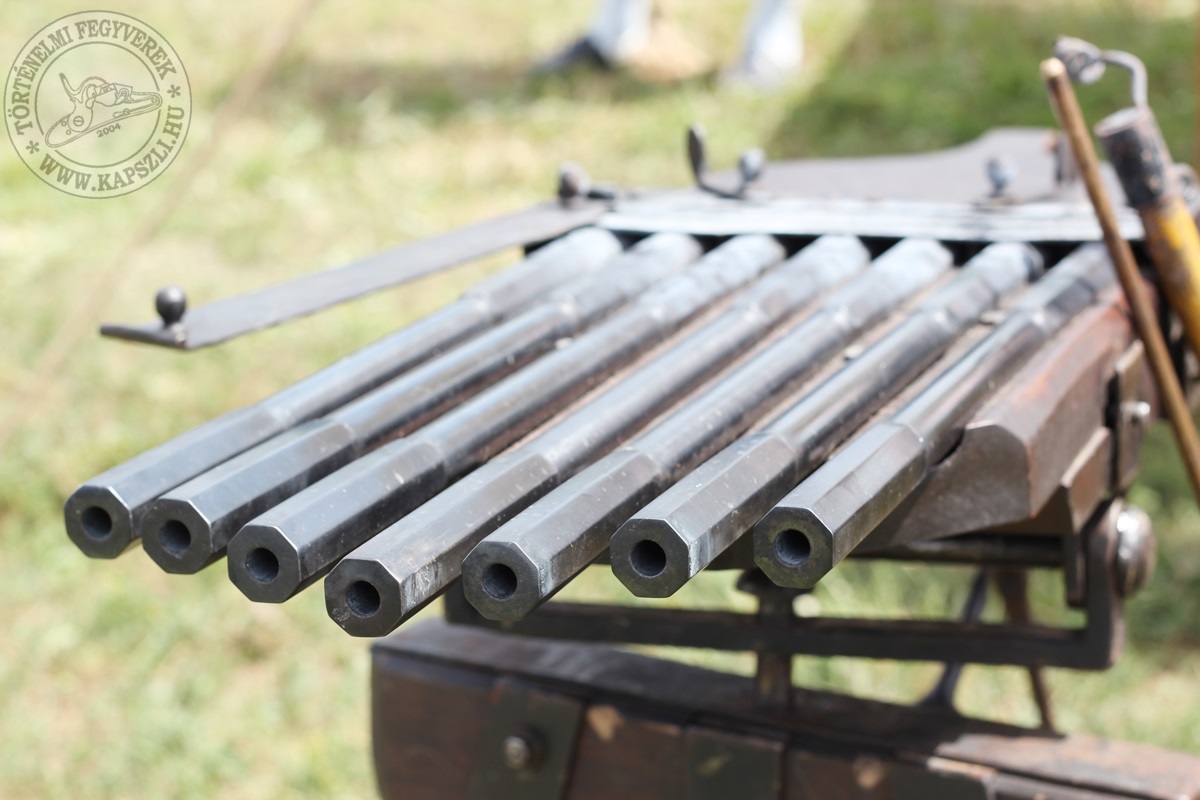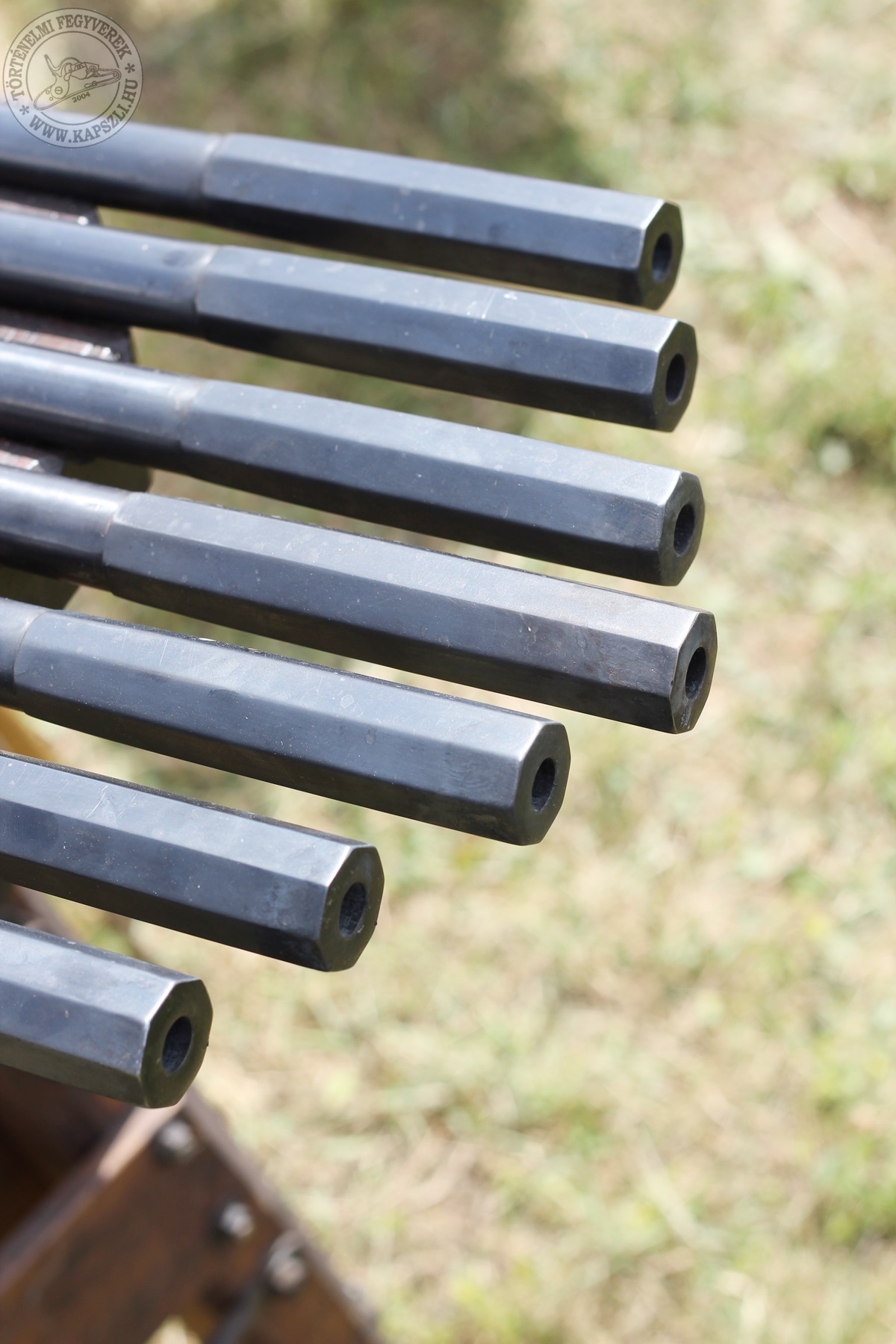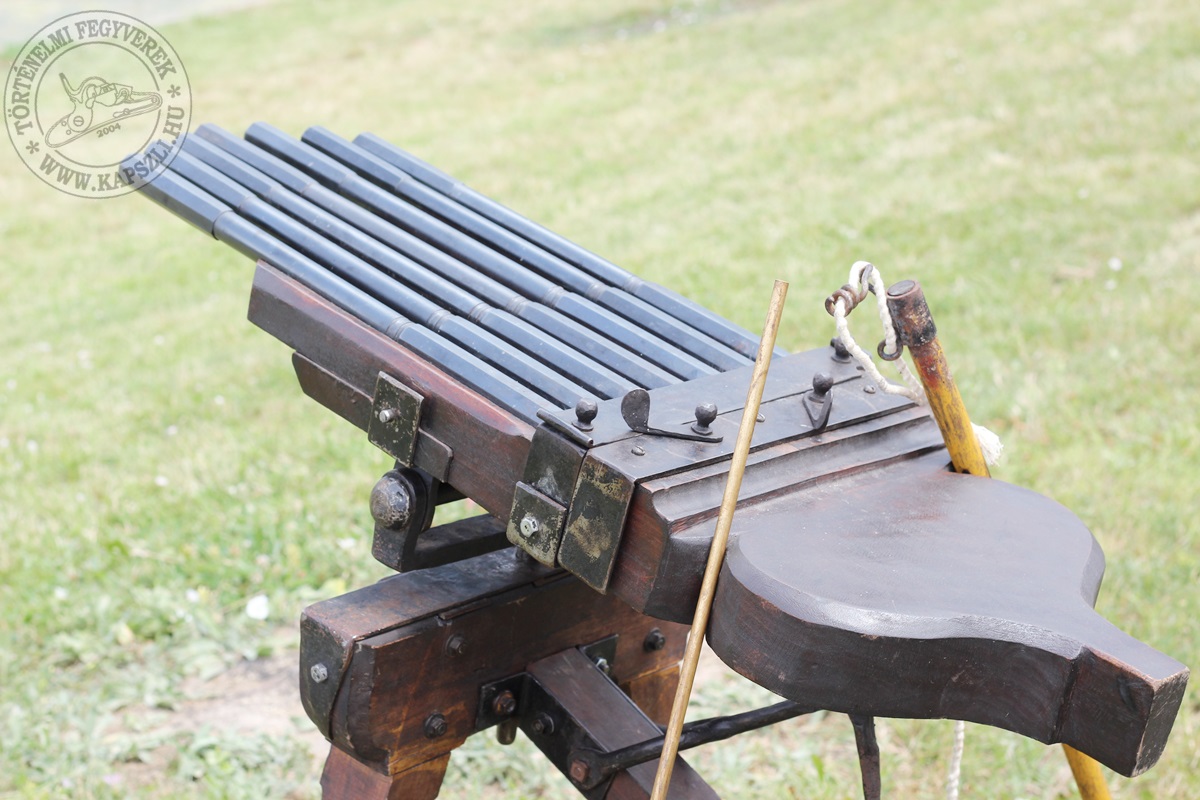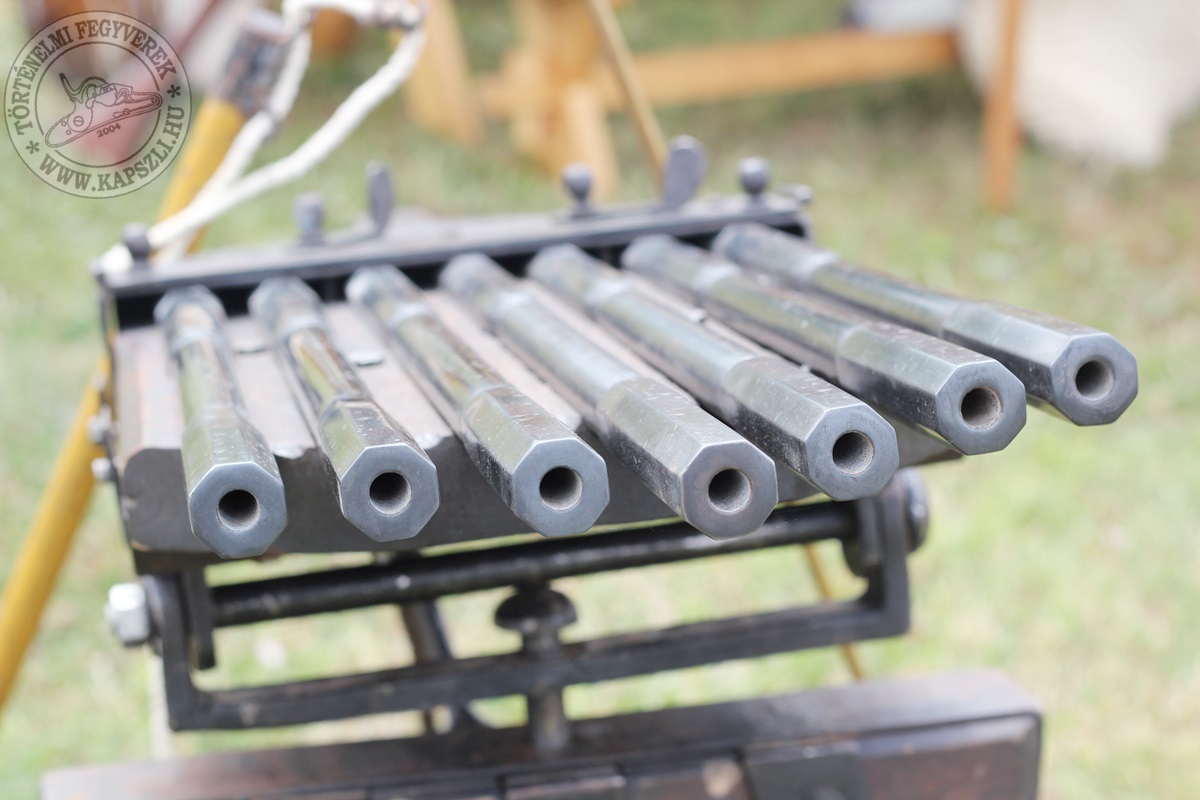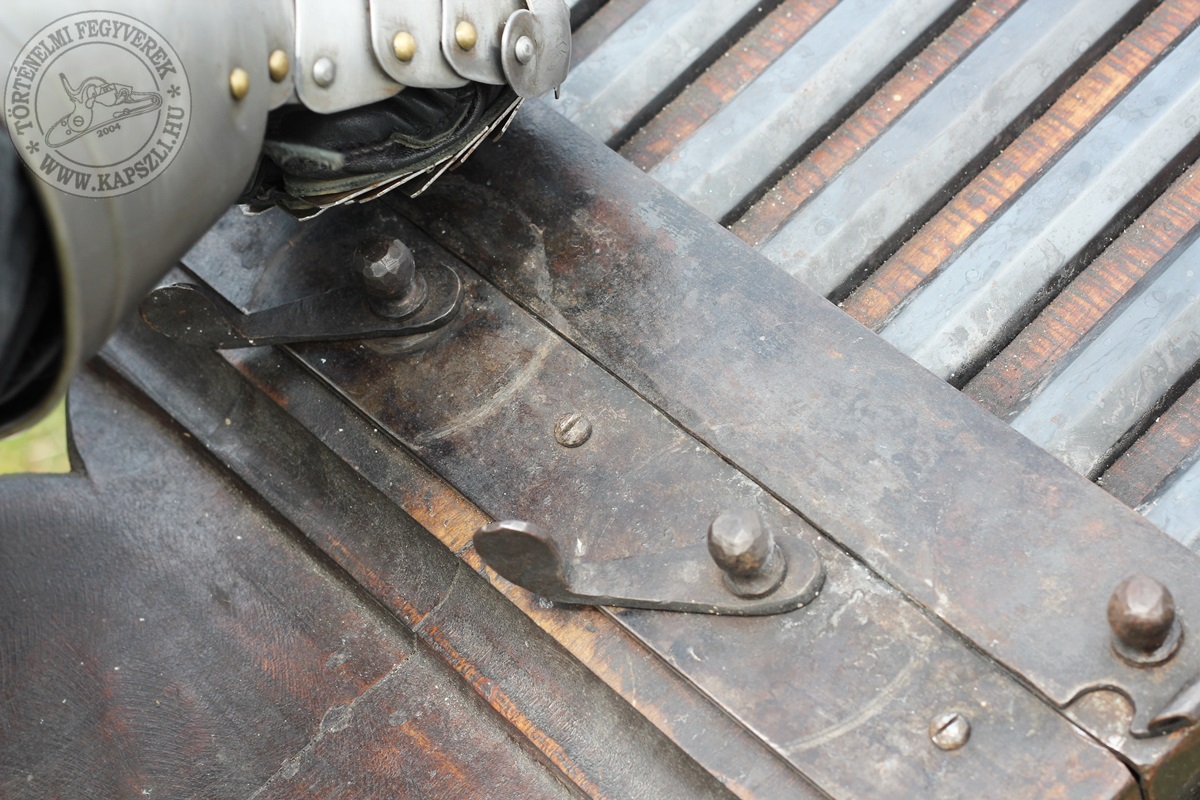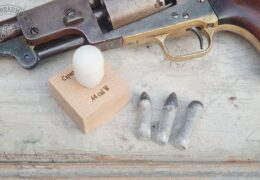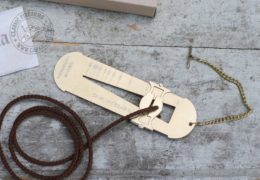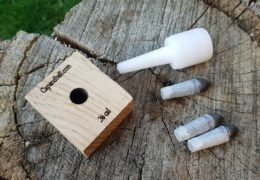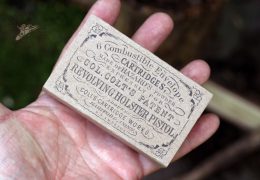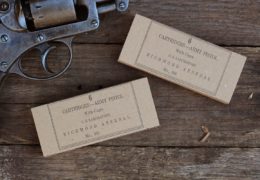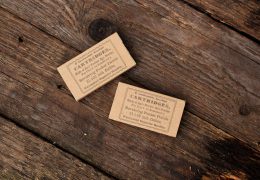The Volley Gun
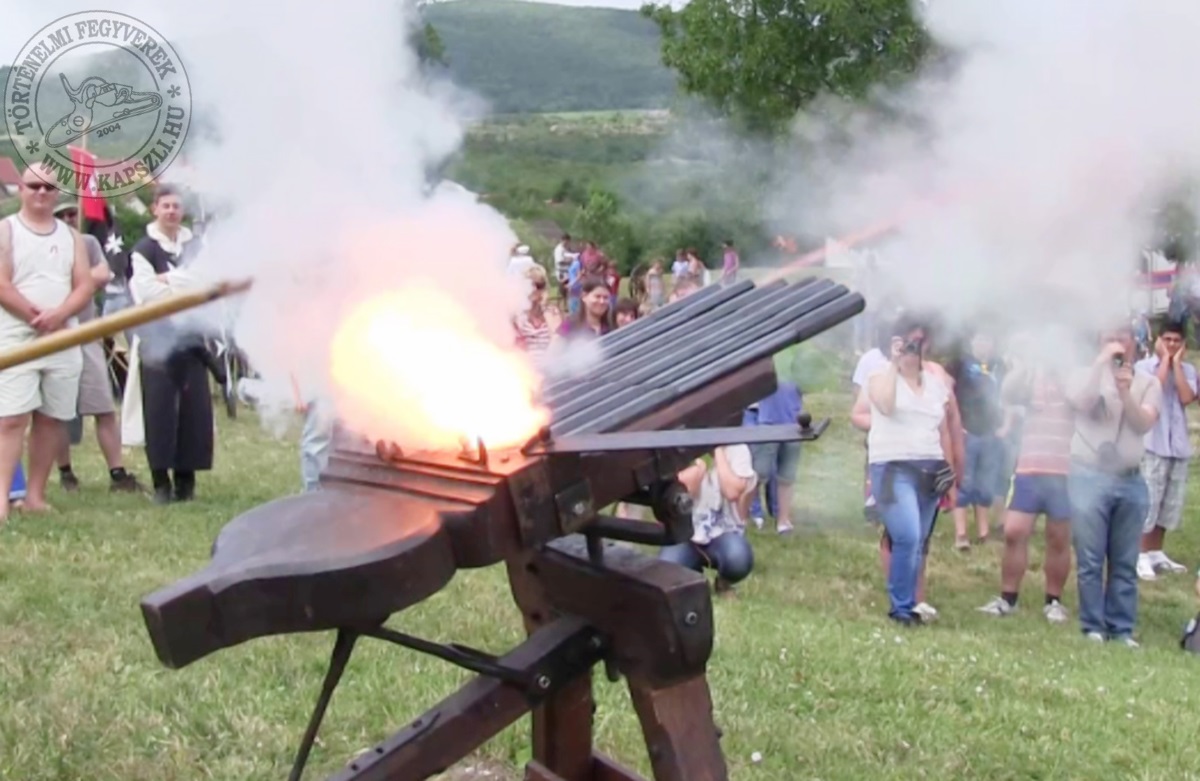
Increasing the rate of fire of muzzleloading weapons was an unsolved problet throug centuries. The only obvious solution was the usage of multi-barreled systems, such as volley guns. The main idea was simple: mount several barrels close to each other and connect the vent holes, so all chambers could be ignited at the same time. The volley guns not only managed to increase fireing rate, but also offered the user concentrated firepower, which could be directed to any target.
The first volley guns were used in the Hundred Years’ War. The horizontaly aligned barrels mounted on a wheeled carriage were named Ribauldequin gun, and it was Edward III of England who used them.
- A faithful copy of an original artillery piece from the Wiener Neustadt Museum can be seen in the following pictures. In the Hungarian history, it was used against the turks in fortresses on the Ottoman-Hungarian border. They were manufactured mostly with odd number barrels aligned in one or two row. The ignition is done with a channel filled with gunpowder. The lid was closed and a pot of ember was placed close, so in case of need it could be fired by any nearby soldier. If the powder was ignited in the middle, the ignition spread in two ways at the same time, thus fireing two barrels in the same time. But if the ignition started on one side, the barrels were fired one-by-one.
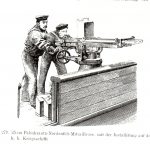 The successor of the volley gun was the Mitrailleuse, and later the multi-barreled systems such as the Gatling Gun. The Palmkrantz-Nordenfeld Mitrailleuse was used on vessels of the Austro-Hungarian Navy. These pieces were breech-loading weapons, but the reloading mechanism was operated by the gunner, and not an automatic reloading system. Of course, at the end of the century the developement of the machine gun changed the face of war – but that is a completely different story...
The successor of the volley gun was the Mitrailleuse, and later the multi-barreled systems such as the Gatling Gun. The Palmkrantz-Nordenfeld Mitrailleuse was used on vessels of the Austro-Hungarian Navy. These pieces were breech-loading weapons, but the reloading mechanism was operated by the gunner, and not an automatic reloading system. Of course, at the end of the century the developement of the machine gun changed the face of war – but that is a completely different story...
Németh Balázs
Acknowledgements
The authors would like to thank Mr. János Felföldi for the help and the presentation on the video and the Bornemisza János Reenactment Group for the showcased artillery piece.

